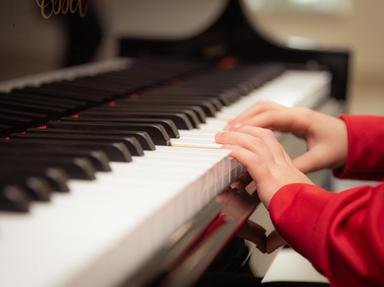Quiz Answer Key and Fun Facts
1. There are several types of piano. What type is the one in my picture?
2. Which part of the orchestra does the piano belong to?
3. Look at the keys on a piano and you will notice that they are arranged in a pattern, with two black, three black, two black, three black, etc., separating the white keys. What name is given to the interval between any two keys in corresponding parts of the pattern?
4. This thing is not part of a piano, but is very closely associated. What is this helpful learning tool called?
5. Many pianos have three pedals. Which is NOT the name of one of the pedals?
6. These objects are the parts of the piano that actually make the noise. They hit the strings and make them vibrate. What are they called?
7. This is a pretzel, which normally would have no connection to pianos or music. However, it is shaped like something that most pianists would recognise. What musical symbol is it shaped like?
8. This type of piano is not as common as it used to be; it is called a 'player piano'. What other name are they often called?
9. This instrument is an early ancestor of the piano, using the same principle of hammers striking strings. What is it called?
10. In the 1920s and 30s, smaller pianos were made, with fewer keys. This was done to make them more affordable. Modern pianos have more keys, but exactly how many in all?
Source: Author
ozzz2002
This quiz was reviewed by FunTrivia editor
NatalieW before going online.
Any errors found in FunTrivia content are routinely corrected through our feedback system.


